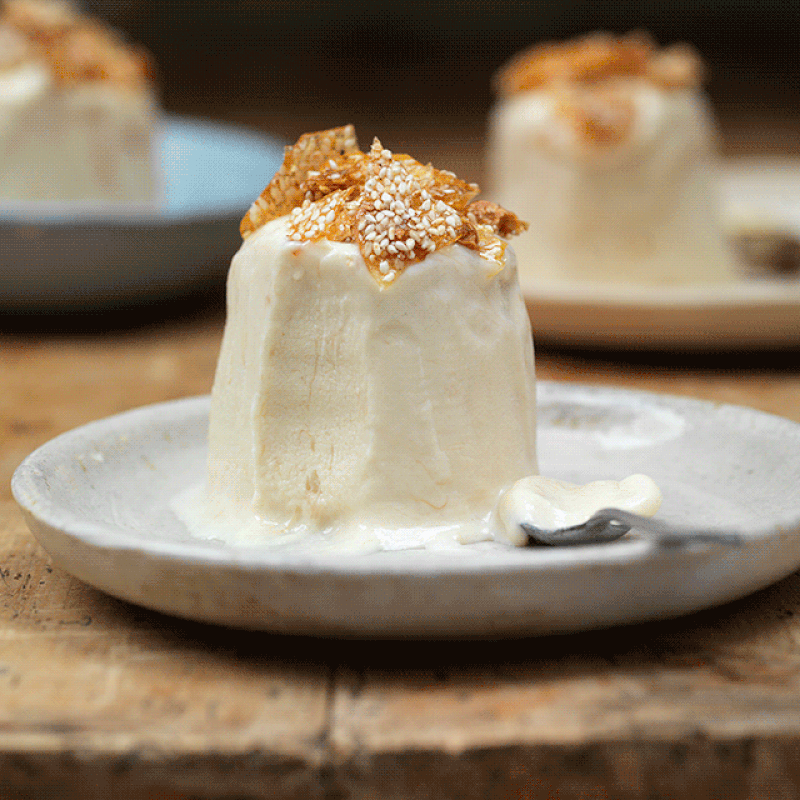How To Cook With Elderflower At Home
Lucy Carr-Ellison & Jemima Jones, Wild by Tart
“Elderflowers are found dotted along hedgerows all across the UK and you’ll also find them in London’s parks. Avoid picking the flowers from a busy road as they’ll be polluted with fumes and make sure you don’t strip a tree bare – leave plenty to develop into berries and to be enjoyed by local wildlife. Take a pair of secateurs, we like using needle nose fruit pruners, which are small and sharp and fit nicely in your pocket, and snip just below the main stem belonging to the head of flowers. Take a basket or a bag with you to carry your find. Elderflowers, belonging to the elder tree flower through late May, June and into July/early August and they have a delicate, sweet scent. The flowers are small and creamy-coloured, almost lace like, and create dense umbrellas of blossoms (they look similar to cow parsley) and have five petals. You know it’s elderflower from its sweet and floral strong scent. The first go-to is to make a cordial which can be added to a refreshing glass of sparkling water and mint, added to champagne or a gin and tonic. We infuse vinegar to use in dressings and it works wonderfully in desserts like ice-cream, tarts, cakes and other pastries. You can also make crunchy little elderflower fritters which are great fun and work well as garnish.”
Visit WildByTart.com
James Knappett, Kitchen Table
“Elderflowers have a light creamy/pale yellow colour. The pollen gives the flowers their smell and colour. Their pale green stalks break into delicate 'florets' with flowers growing at the end. There are some foraging apps available that show you where there could be potential trees around you. I would suggest looking up a couple of pictures online prior to foraging and reference those pictures when you think you have found an elderflower tree. Quite often you can smell the scent as you get closer towards the plants. Elderflower can be confused with Pyracantha – from a distance they may look like elderflower but close up there are some key differences. One of the most distinctive things about elderflowers is the smell: floral, creamy and 'summery'. You can look in hedgerows, fields with trees and small tree outcrops. Elderflowers grow on trees that are up to 5 metres high and not on the floor. Elderflower is a very versatile ingredient. At Kitchen Table we use it for cordials, fresh herbal tea, infused vinegars or oils, infused in honey, ice-cream, sorbets, granita, in salads and as garnishes for fish courses. It is also very common to use it for in wine and champagne production.”
Visit KitchenTableLondon.co.uk
Will Bowlby, Kricket
“My mum and I pick elderflowers every year together. We make a huge batch of cordial which is great for our elderflower kulfi at Kricket (see recipe below), but that’s not all it’s good for. Elderflower vinegar is also a staple of mine. To make it, fill a sterilised jam jar with five elderflower heads and top up with warmed white wine or distilled white vinegar. Leave it to steep for two weeks before straining and using in dressings. It’s great with fish and at the restaurant we use it for scallops and the likes of whole plaice. The individual flowers are a great garnish, or you can tempura and deep-fry the whole elderflower heads.”
Visit Kricket.co.uk
Bettina Campolucci Bordi, Bettina’s Kitchen
“Elderflowers are the prettiest flowers and they smell divine. There are some tricks that foragers follow to ensure they get a good crop of elderflowers and also ensure that the plant is cared for, for its own welfare and sustainability. This way people, birds, animals and other plant life can all benefit from this magical plant.
Smell them: If they smell of cat pee (yes, really), walk away, as they are past their picking prime.
Look at the colour: The flowers of the tree are at their best when they are full of scented, pale yellow dust, which is the pollen. This is the only time to pick them.
Look for pods: If the flowers are only unopened then you're in luck. If they have not flowered yet, all you need to do is wait a few days until they do. This is much better than finding them when they are past their best.
It’s best not to eat elderflowers raw, as the plant has a mild toxicity, which is why it is best to cook them or make cordial from them. Some people get an upset stomach from eating elderflowers or elderberries (elderflowers and elderberries come from the same plant). When cooked, elderflowers have a great flavour. Not only can you make elderflower syrup or cordial, you can use it in jams, cakes, jellies, infused vodka and other liquors. If you're into a foodie project, you can make elderflower wine or fizz and for an alcohol-free option, try kombucha.”
Visit BettinasKitchen.com
Tom Booton, The Dorchester
“I like to make an elderflower cordial – perfect as squash or added to pastry recipes. Bring 3 litres of water and 1kg of sugar to a boil to dissolve the sugar, then remove from the heat. Add 20 heads of washed fresh elderflower, 4 lemon slices, 3 sticks of lemongrass – bashed and cut – and 10ml of lemon juice. Cover with cling film and leave in the fridge for 24 hours to infuse. Pass through a clean cloth the next day and bottle up.”
Visit TheDorchesterCollection.com
Wil Hopson, Zested
“The first bit of advice is to pick them as soon as possible after blooming, as they can become cloyingly perfumed if you wait too long. Give them a good clean and then gently heat up around 500ml of cider vinegar to about 60°C for every 3 sprigs of elderflower (which you should check for cobwebs, spiders and other countryside bits). Cram the elderflower into a large, sterilised jar and pour over the vinegar. Leave to infuse for anything from two days to two weeks, depending on how elderflower-y you'd like it, then strain through a fine cloth or muslin. The resulting vinegar will give your salads an elderflower kick for the rest of the year, and works especially well alongside chicken and mint. It also adds a bit of something different to an early evening G&T.”
Visit Zested.com
Inspired? Here are five elderflower recipes to try at home…
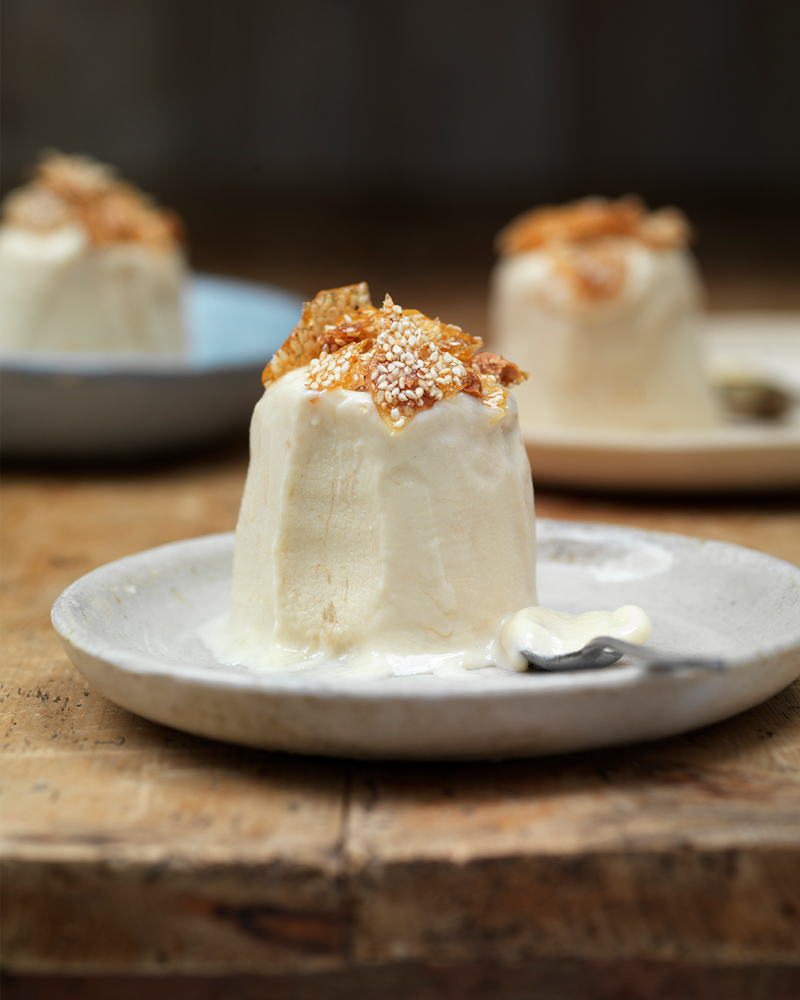
Elderflower & Rhubarb Kulfi With Sesame Brittle: Will Bowlby, Kricket
Kulfi is a hard-set ice cream typically made from buffalo milk, which is often served roadside throughout India, in various flavours. This is the best one I’ve tried – the perfect way to cool yourself down on a hot day. The sesame brittle adds a texture and crunch to this dessert – plus, you can buy it ready-made.
Preheat the oven to 180°C/Gas Mark 4.
Place the rhubarb in an earthenware dish, add 1 tbsp of the elderflower cordial and roast in the oven for about 20 minutes until soft. Mash the rhubarb and put to one side.
Pour the evaporated milk, condensed milk and cream into a pan and whisk together until well combined. Add the lemon zest. Bring to a simmer over a low heat and stir for 5 minutes. Remove from the heat and add the remaining elderflower cordial, mix and leave to cool.
Pour the mixture into a bowl, add the mashed rhubarb and whisk into the infused cream until very well combined and smooth in consistency. Spoon into 4 moulds or ramekin dishes. Freeze for at least 4 hours or overnight.
Meanwhile, to make the sesame brittle, line a baking tray with baking parchment. Heat the sugar in a heavy-based saucepan gently over a medium-low heat, without stirring, for about 5 minutes until bubbling and golden. Stir in the toasted sesame seeds, boil for a few seconds, then pour onto the prepared baking tray, spreading as thinly as possible. Leave to cool and harden completely. Bash the brittle into small shards.
To loosen the kulfi from the moulds, dip the bottoms of them briefly into hot water, run a knife carefully round the edge of the mould and turn out onto a plate. Top with the shards of sesame brittle and serve.
Visit Kricket.co.uk
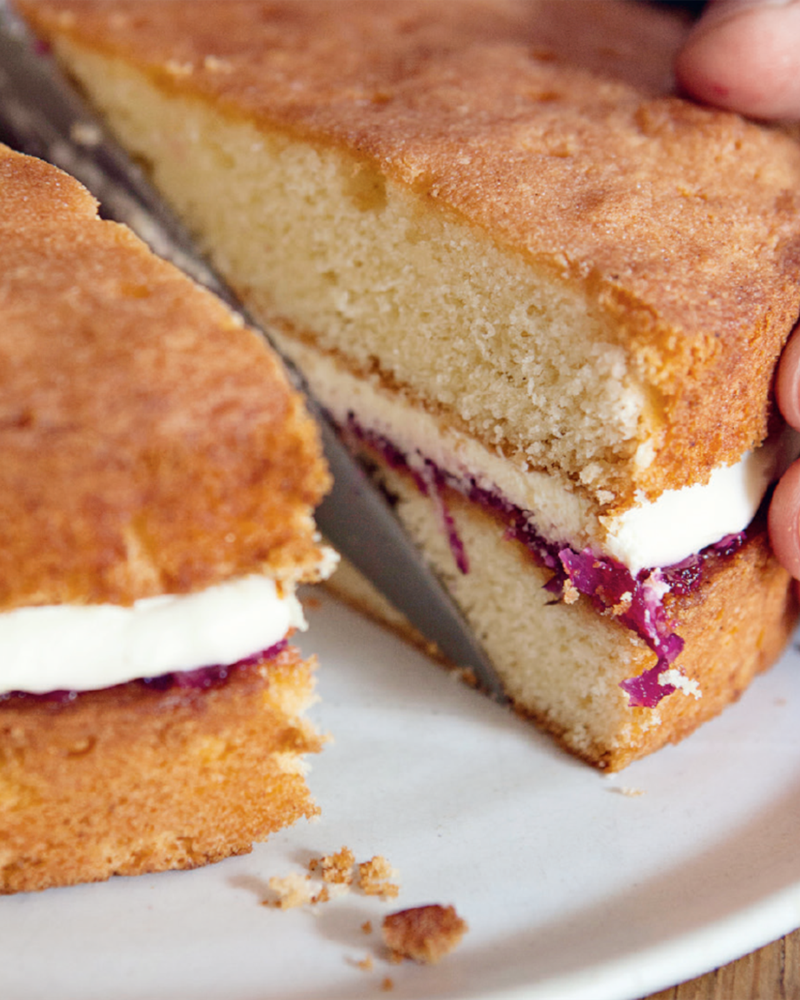
Elderflower Drizzle Cake: Tommy Banks, The Black Swan at Oldstead
To make the jam, place the petals in a bowl and stir in the sugar. Cover and leave in the fridge overnight.
Bring the remaining ingredients to a simmer in a large pan. Add the macerated flowers and bring to the boil. Boil the jam slowly for 2-3 minutes. Test the jam by placing a tsp of the hot mixture on a cold plate to see if sets. Once ready, pour into a sterilised jar.
Now, make the elderflower cream. In a saucepan combine cream and elderflower heads and bring almost to the boil. Remove from the heat, cover the pan with clingfilm and place in the fridge overnight to cool completely.
Preheat the oven to 190°C/170°C Fan and line two 18cm round sandwich tins with baking parchment. Place the butter and sugar in a bowl and cream on a high speed until the mixture is almost white. Scrape down the sides of the bowl and whisk again on high speed, gradually pouring in the beaten eggs a few tbsp at a time. You should have a very light and glossy mixture. Carefully fold in the flour then 1 tbsp of milk, and an extra one if necessary.
Divide the mixture between two tins, and bake for 25 minutes, or until a skewer comes out clean.
Meanwhile, combine the drizzle ingredients into a pan, and bring to boil. Pour the liquid into fine sieve to remove the elderflower heads and set aside.
Remove the cakes from oven, poke holes all over them and spoon over the drizzle. Let it soak in and leave to cool in the tin for 10 minutes before transferring to a wire rack and allowing to cool completely.
Remove the cream from the fridge and strain through a fine sieve, squeezing out the elderflowers with the back of a soon. You should have about 200g. Whip the cream with a balloon whisk until it is thick then carefully fold in the yoghurt.
Sandwich the sponges together with elderflower cream and elderflower jam and serve.
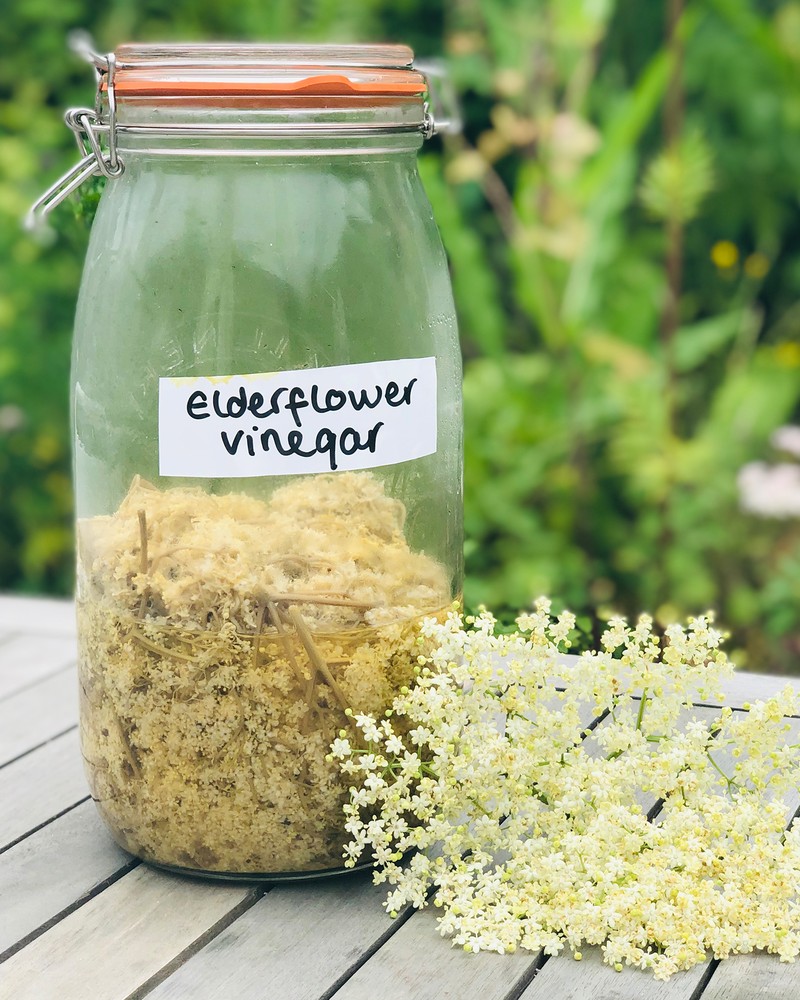
Elderflower Vinegar: Lewis Glanvill, Riverford Field Kitchen
The delicate, floral flavour of elderflower can add freshness and a lightness to many dishes and it’s a great way to preserve the flavour. From late May you will see masses of tiny white flowers in woods and hedgerows and they are best picked when the buds are freshly open on a warm sunny day. To pick them, simply slide your fingers up the stalk and snap the flower head off. We like to use our elderflower vinegar in dressings, but it’s also particularly good with asparagus, courgettes and shaved fennel.⠀⠀
Pour the vinegar into a sterilised jar and push in the elderflower making sure its submerged. Seal and leave to infuse for a week.
After a week strain the vinegar off, bottle it and it’s ready to use.
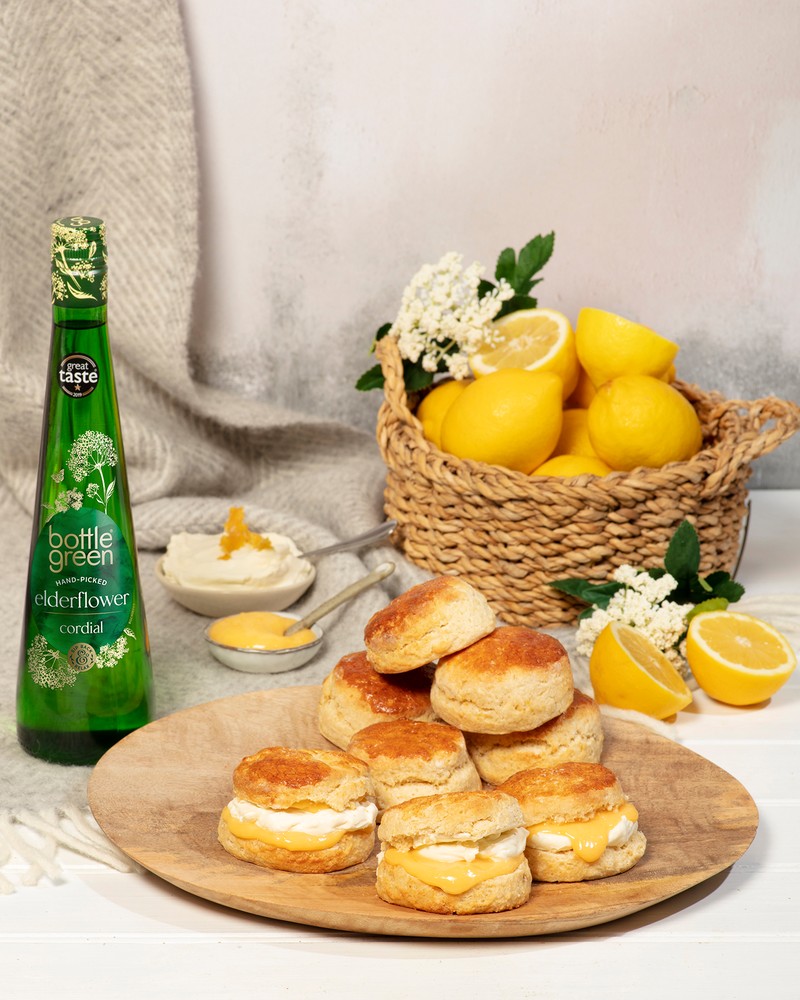
Elderflower Scones With Elderflower & Lemon Curd: Peter Sawkins, 2020 winner of the Great British Bake Off
Preheat the oven to 200°C fan.
Mix the flour, sugar, baking powder and salt in a mixing bowl. Rub the butter in using your fingertips until the mixture resembles fine breadcrumbs.
Whisk the cordial and milk with the egg. Add this to the dry ingredients along with the lemon zest and cut through with a table knife. Once it begins to clump together, get your hands in and gently work it together into a soft ball of dough.
Generously flour your worksurface and turn the dough out onto it. Use a rolling pin or your palms to flatten the dough out to the height of 3-3.5cm. Use a 6cm round cutter to cut out the scones. Transfer them to a baking paper lined baking tray.
Brush the tops of the scones with the additional egg yolk. Bake for 10-12 minutes or until well risen and golden.
Next, make the elderflower and lemon curd. Heat the juice, cordial and zest in a non-stick pan to a simmer. Whisk the sugar with the egg yolks. Slowly pour in the hot juice whilst whisking.
Return this mixture to the pan and constantly stir over low heat until thickened, up to 5-10 minutes, making sure it doesn't boil. You can also check the temperature to see if it is ready; it should register 75°C-82°C. Take the curd off the heat, allow to cool for a couple of minutes, then whisk in the butter a couple of cubes at a time whilst still warm. Cover and chill in the fridge.
To make the elderflower cream, whisk together the double cream, icing sugar and cordial until soft peaks.
Split the scones and fill with a generous serving of the cooled curd and elderflower cream.
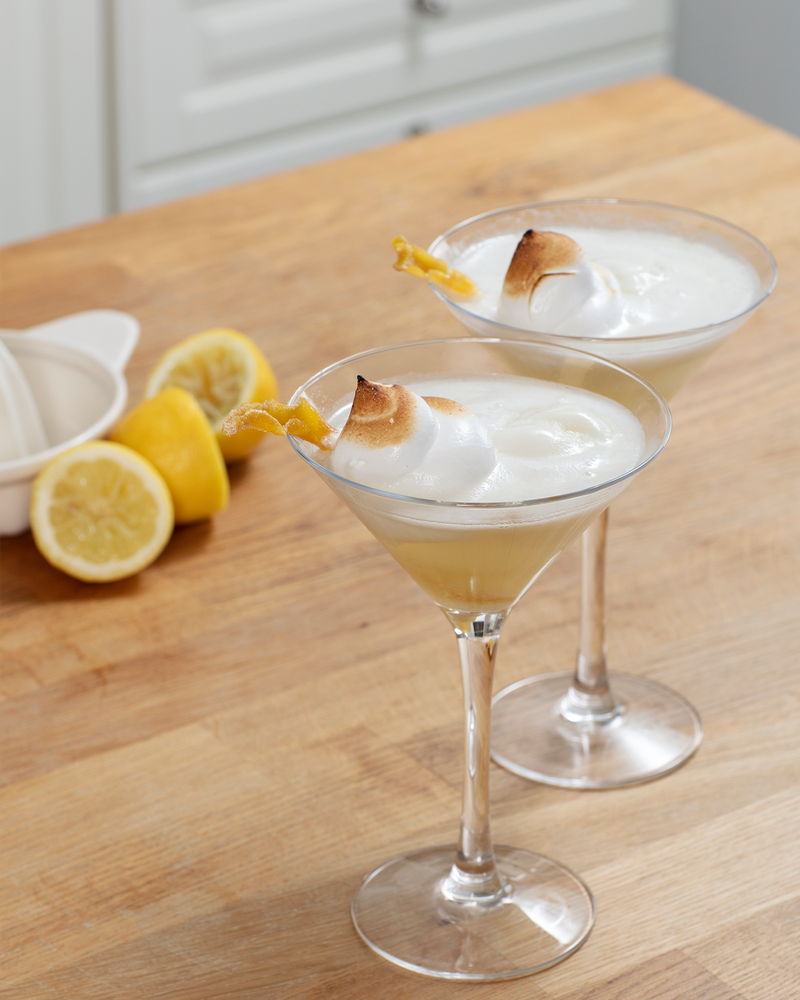
Lemon & Elderflower Meringue Pie Float
First, make the candied lemon peel. Preheat the oven to 100°C. Use a speed peeler to peel large strips of lemon zest from the lemon. Combine the water and sugar over high heat stirring until the sugar has dissolved. Add in the lemon peel and simmer for about 10 minutes. Drain the lemon peel, reserve the syrup and chill for later. Lay the drained peel on a baking tray and bake in the low oven for about 30-40 minutes to dry out. Remove the peel from the oven and roll in the additional caster sugar.
For the Italian meringue, stir together the sugar and water over high heat until the sugar has dissolved and it begins to boil. Remove the spoon from the pan and leave boiling over high heat.
Meanwhile, whisk the egg whites in a stand mixer or with an electric hand whisk until a cloud like texture.
Once the sugar syrup registers 121°C on a sugar thermometer, remove it from the heat and slowly pour into the egg whites whisking at high speed. Continue whisking until the mixture is cool, firm and glossy. Fill a piping bag with the meringue.
To make the elderflower lemonade, strain the lemon juice into a jug. Stir through the syrup and cordial.
Now assemble the floats. Add one scoop of lemon sorbet into each glass. Fill each glass about ¼ of the way up with the elderflower lemonade. Top off each glass with tonic water.
Pipe the Italian meringue over the sorbet and brown with a blow torch. Finally, top the meringue with a piece of the candied lemon peel.
Visit BottlegreenDrinks.com
DISCLAIMER: We endeavour to always credit the correct original source of every image we use. If you think a credit may be incorrect, please contact us at info@sheerluxe.com.
